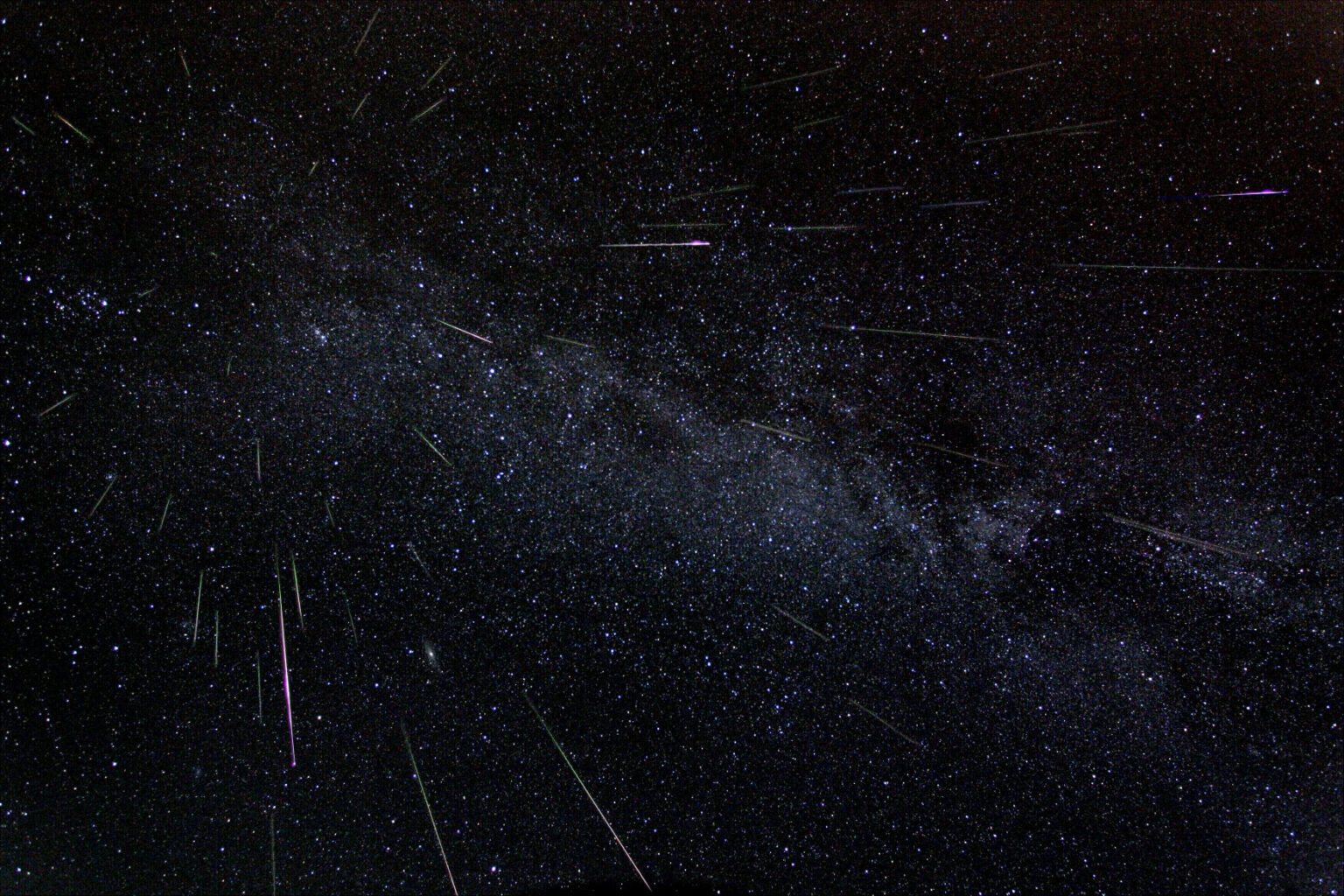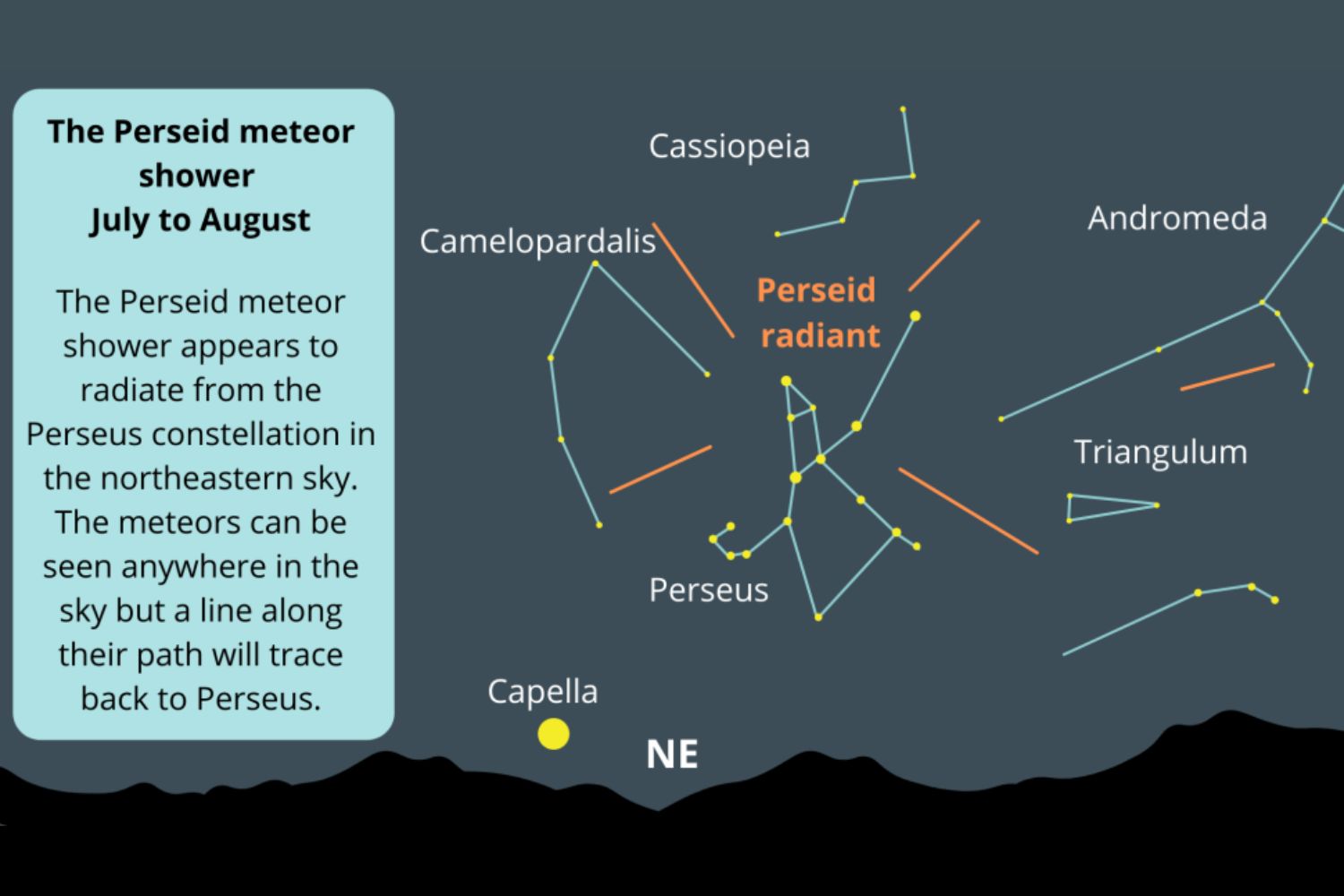NATIONAL NEWS - The Perseid meteor shower (also known as the Perseids) will peak on Friday and Saturday, according to the Bronberg Weather Station in Pretoria.
Unfortunately, the Perseid meteor shower won’t be visible to those of us in the southern hemisphere, but fret not! There’s no reason to miss out on all the fun.
Perseid Meteor Shower 2022
 Astronomer Fred Bruenjes recorded a series of many 30-second long exposures spanning about six hours in August 2004 using a wide angle lens. There are 51 Perseid meteors in the composite image, including one seen nearly head-on.
Astronomer Fred Bruenjes recorded a series of many 30-second long exposures spanning about six hours in August 2004 using a wide angle lens. There are 51 Perseid meteors in the composite image, including one seen nearly head-on.
Photo: NASA/Fred Bruenjes
What are the Perseids
The Perseid meteor shower is an annual celestial event during which Earth passes through rock and ice debris left behind by Comet Swift-Tuttle.
It’s one of the largest and most spectacular meteor showers with a 133.28-year orbital period. The comet paid us a visit back in December 1992, and won’t return until 12 July 2126.
In 2022, the Perseids are visible between 14 July to 24 August, peaking on 12 August. It produces up to 150 streaks per hour.
The much-anticipated celestial event will not be as bright as it was in 2021 – August’s Sturgeon full moon steals the spotlight this year.
 Illustration: Space.com
Illustration: Space.com
The deadly Comet Swift-Tuttle
Swift-Tuttle was discovered by Lewis Swift on 16 July 1862, and by Horace Parnell Tuttle on 19 July 1862. Today, it is classified as an Apollo-class asteroid.
It travels at a velocity of approximately 60 kilometres per hour and has been referred to by Gerrit L. Verschuur as the “single most dangerous object known to humanity”.
Why? Let’s put it this way: Remember that time when dinosaurs were wiped off the face of the Earth 66 million years ago?
That was the Cretaceous–Paleogene extinction event. If Comet Swift-Tuttle were to hit Earth, it would be 27 times worse than that.
However, even though it “would be a very bad for Earth”, Donald Yeomans, a senior research scientist at NASA’s Jet Propulsion Laboratory said it won’t happen any time soon.
What happens during a meteor shower
A meteoroid or meteor is a space rock which enters Earth’s atmosphere, we often mistakenly refer to meteors as ‘shooting stars’.
The bright streak you see? That’s the meteor’s tail and it’s not a star, just hot air and gas. When a bunch of meteors enter our atmosphere, we call it a meteor shower.
NASA explains: “As a comet gets closer to the sun, some of its icy surface boils off, releasing lots of particles of dust and rock”.
“This comet debris gets strewn out along the comet’s path, especially in the inner solar system (where we live) as the sun’s heat boils off more and more ice and debris.”
When is the next meteor shower?
There will be several meteor showers over the coming months – another shower in August, one in September, four in October, four in November and three in December.
However, only one would be worth the wait. The Geminids will peak on 14 December, and up to 120 streaks may potentially be visible per hour.
What’s more, we in the southern hemisphere would be in the prime seats for this one.
In other news, a ‘potentially hazardous’ asteroid will be passing by Earth today at roughly 33 000 kilometres per hour.

![Perseid Meteor Shower: When it peaks and how to watch in SA [live stream]](https://cms.groupeditors.com/img/1f548a9d-f062-4334-9b28-97b37f6e0092.jpg?w=400&scale=both&quality=100)














